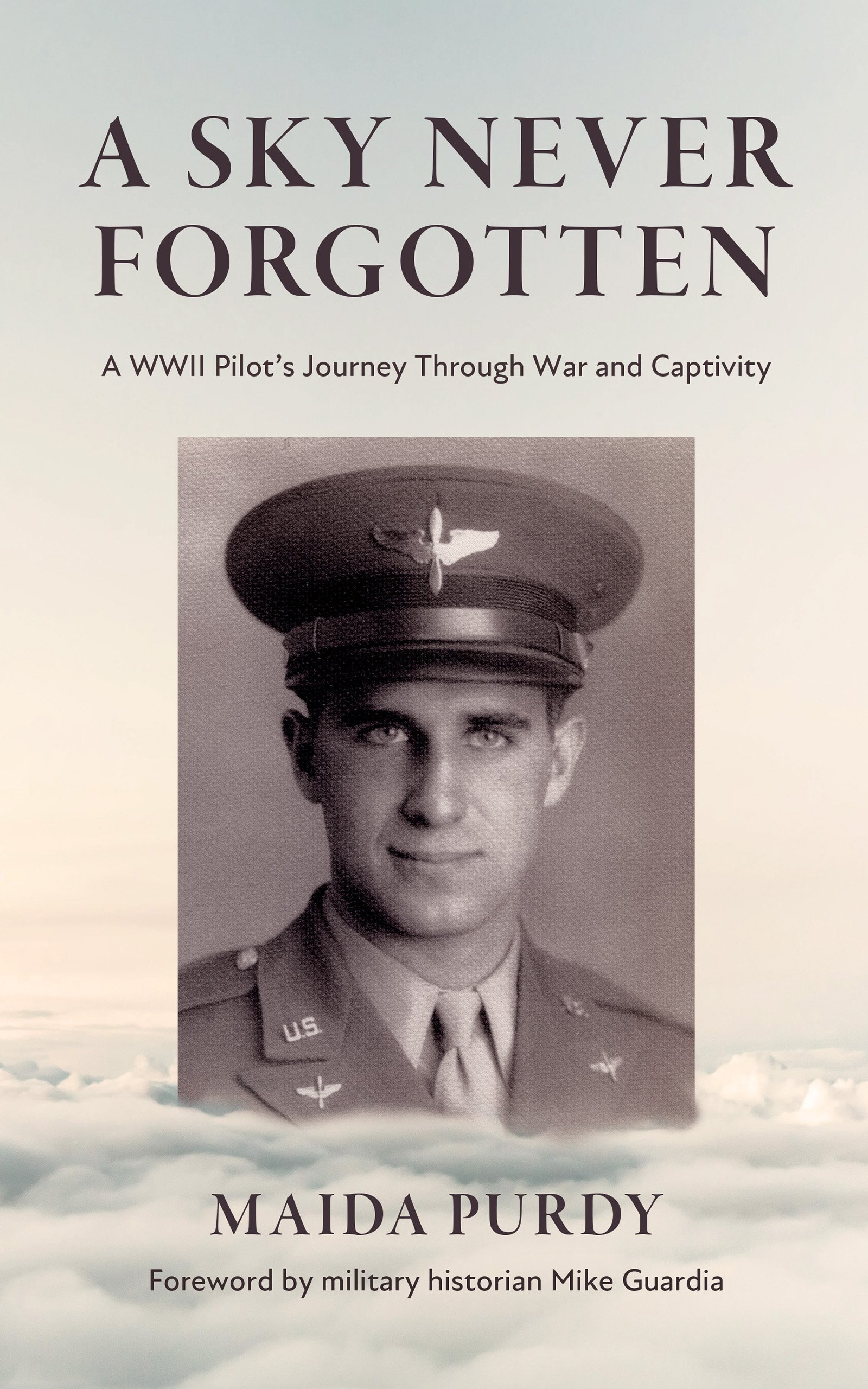Malcolm McIntire
by Alan McIntire
(Stockton California)
Before I die, I would like to write a short account of my experiences
Here is the scene: we lived in tents. You weren’t assigned a tent—you just found a couple of friends—drew a tent from supply—set it up for yourself.
We slept on cots, usually 3 or 4 to a tent under army blankets. We had no sheets, no mattresses, or pillows. Some people had gasoline lanterns, a few used candles, most just got used to the darkness at night. Amazingly, I don’t remember any fires.
There was no laundry service so I didn’t wear underwear. Everybody wore cotton uniforms and if you wanted them washed, you washed them yourself.
I shaved on alternate days and my washbowl, laundry tub, and bathtub was my C.I. issued steel helmet. The one Patton made everybody in the Army wear. I never took a bath, but swam in the Mediterranean and had one towel. These were not hardship conditions. The Air Force lived a comfortable life in comparison with soldiers.
I flew 36 missions: Half (six times each) were to three targets: The ports of Messina, Catania, and the Airfields at Foggia. I also made the celebrated trip to the oil refineries at Ploesti, an airplane plant at Wiener Neustadt, a suburb of Vienna, many harbors and airfields in Sicily and Italy and missions to Athens and Rhodes.
There were two principal hazards to a bomber’s life: Anti-aircraft fire and fighter aircraft interception. I will describe both briefly and tell about several untypical missions.
German antiaircraft, was the famous 88mm cannon. AA made bombers fly high, 20,000 feet, where the crews wore oxygen masks and suffered from cold. The crucial fact was that it takes an artillery shell more than 30 seconds to reach an altitude of 20,000 feet. During these 30 seconds an airplane flies a mile and one-half. So the AA gunners are not aiming at the plane, but rather at a point 1 ½-2 miles in front of the plane.
To summarize, antiaircraft fire seldom hit anyone, but completely ruined bombing accuracy by preventing the bombers from making those straight, level bomb runs.
German AA shells were filled with TNT (trinitrotoluene) and equipped with time fuses. They burst with a puff of black smoke and the sky over the target was literally flak filled. This is the product of two illusions: You are looking at a piece of sky which is approximately a circular and perhaps five miles in diameter. Although there are hundreds of shell bursts they are distributed over perhaps 20 square miles of area and though they look impenetrable they were actually easy to fly through. The second illusion of course, is that each shell burst is only dangerous for a few seconds, but the puff of gradually dissipating smoke lasts for minutes.
German pursuit planes, usually the Messerschmidt 109, sometimes the Fokewulf 190, were equipped with four 20mm cannon, two in each wing, and were aimed by aiming the airplane. There is nothing good about being hit by cannon-fire so I will first list mitigating factors: Fighter Planes carried a limited amount of fuel so that you were never under attack longer than 15 to 20 minutes. Another factor adds an element of ugliness: a burning, smoking, or distressed bomber drew all the fighters in the area. In fact they wasted a lot of time and ammunition shooting up doomed burning bombers.
This means of course, that you fly home unscathed because of the misfortune of your friends; an ugly fact indeed.
Most of the planes I have seen shot down burned. This is a sight which once seen can never be forgotten, as you will never see it on television or a movie, I will attempt to describe: the burning plane is flying relatively straight and slightly downward. It is full of fire and the flames stream out behind exactly like a giant blowtorch, for 60 or 70 feet. Obviously, no one is alive in the plane and it burns for what seems to be an eternity. It usually ends by breaking into two, just back of the wings and after which both halves fall straight down. This brought questions to my mind—neither of which I have ever discussed with anyone.
First of course, is how much time will I have to get out, if and when we are hit and start to burn: the answer, not over a minute.
My second question: can I rely on interplane conversation or an alarm bell to tell me we are burning and that it is time to get out? Obvious answer: not only no, but hell no. After seeing planes burn I always, when we were under attack, or potentially attacked, attempted not only to watch the sky, but also to monitor the condition of our airplane—so that I would be aware if we were burning.
***
Comments for Malcolm McIntire
|
||
|
||
|
||
|
||
|
||
|
||
|
||
|
||
|
||
|
||
The website 376bg.org is NOT our site nor is it our endowment fund.
At the 2017 reunion, the board approved the donation of our archives to the Briscoe Center for American History, located on the University of Texas - Austin campus.
Also, the board approved a $5,000 donation to add to Ed Clendenin's $20,000 donation in the memory of his father. Together, these funds begin an endowment for the preservation of the 376 archives.
Donate directly to the 376 Endowment
To read about other endowment donation options, click here.
Reunion
NOTE change in the schedule !!
DATES: Sep 25-28, 2025
CITY:Rapid City, SD
HOTEL: Best Western Ramkota Conference Hotel; 2111 North LaCrosse St., Rapid City, SD 57702; 605-343-8500
Click here to read about the reunion details.




















